If you’d love to add a few houseplants to your decor but fear you possess a brown thumb, fear not, there are numerous low-maintenance, easy-care houseplants just for you.
This list of the 16 best indoor plants contains houseplants that are forgiving, so if you forget to water them one day, these plants will survive if they are subject to a bit of neglect.
And on the other hand, if you’re looking for the most difficult houseplants to grow, we have that too.
Choosing the Best Houseplants
Nothing will brighten up your living space more than a thriving houseplant with beautiful foliage, but it can be hard to choose which plant is right for you and your home. There are a couple of the most important things to keep in mind when looking at indoor plants: light and watering.
When selecting what plants to place around your home, an important aspect to consider will be where you plan to place your plants. This will influence the amount of light the plant can receive.
Some of these plants will thrive in indoor environments that receive very little natural light, like the Pothos. Or if your home or office has lots of light and a tendency to scorch leaves or shrivel plants, consider some type of cactus or a Ponytail Palm.
Overwatering is probably the number one reason for the demise of most houseplants. Don’t worry if you have trouble knowing if you gave plants too much water or not enough.
There are a few that are forgiving with an excess of water, like a Peace Lily or a Chinese Evergreen. So, if you are an apprehensive plant owner that tends to overwater, choose one of these.
If, on the other hand, you forget to water the plant, a Philodendron, Jade Plant, Snake Plant, or ZZ Plant are more appropriate.
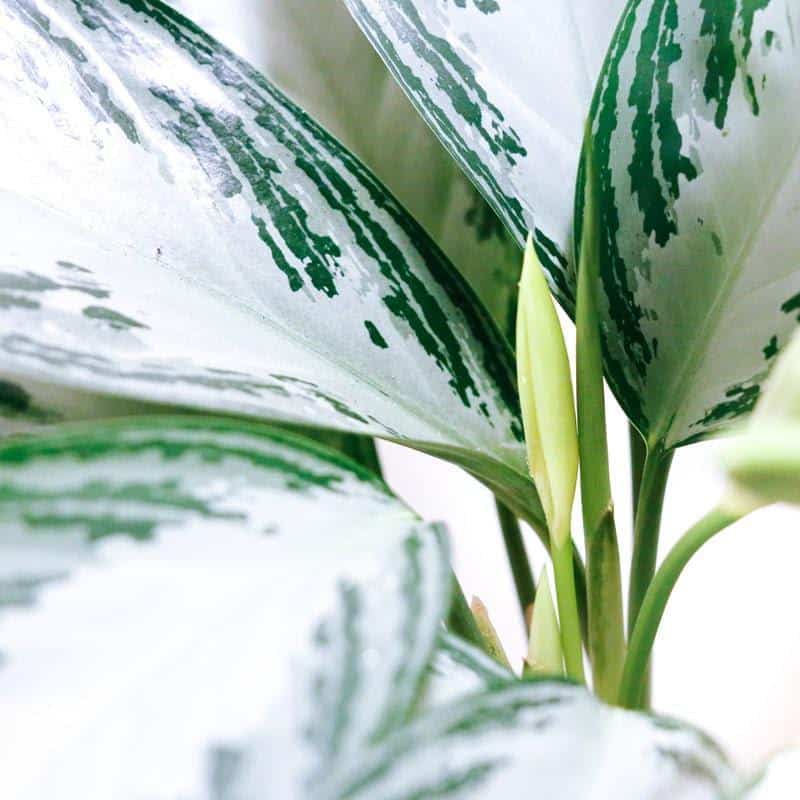
1. Aglaonema “Chinese Evergreen”
The glorious Aglaonema or Chinese Evergreen can survive over-enthusiastic waterers. Native to Asia, Aglaonema commutatum is a decorative houseplant that grows naturally on the floor of rainforests.
The Chinese Evergreen likes dappled or indirect light, rather than direct full sun. Positioned near a window, this plant will thrive. It also loves humidity, so a humidifier would be beneficial. A pebble tray or frequent misting can be good alternatives.
Read all about how to care for the Chinese Evergreen.
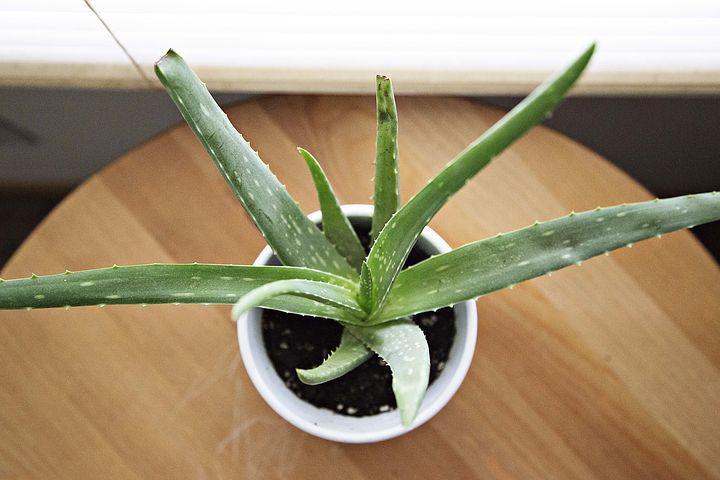
2. Aloe Vera Plant
Known for its medicinal properties, the aloe vera plant boasts beautiful plump leaves that are filled with a watery gel known for treating sunburn. This natural gel is also used for burns, insect bites, and numerous skin irritations.
- Related article: Health Benefits of Indoor Plants
Native to Madagascar, Africa and the Arabian Peninsula, this is an attractive perennial succulent and member of the Liliaceae family. The “Aloe barbadensis miller” is the species most often found growing in homes and offices. Like all cacti, succulents do better in dryer conditions.
Your aloe plant will do very well when cultivated indoors. It needs bright, indirect sunlight. This is typical of succulents. Fleshy leaves are at risk of scorching with direct light exposure. The aloe vera is a drought-tolerant plant, but watering on a schedule is preferable.
Learn more on how to care for the aloe vera plant.
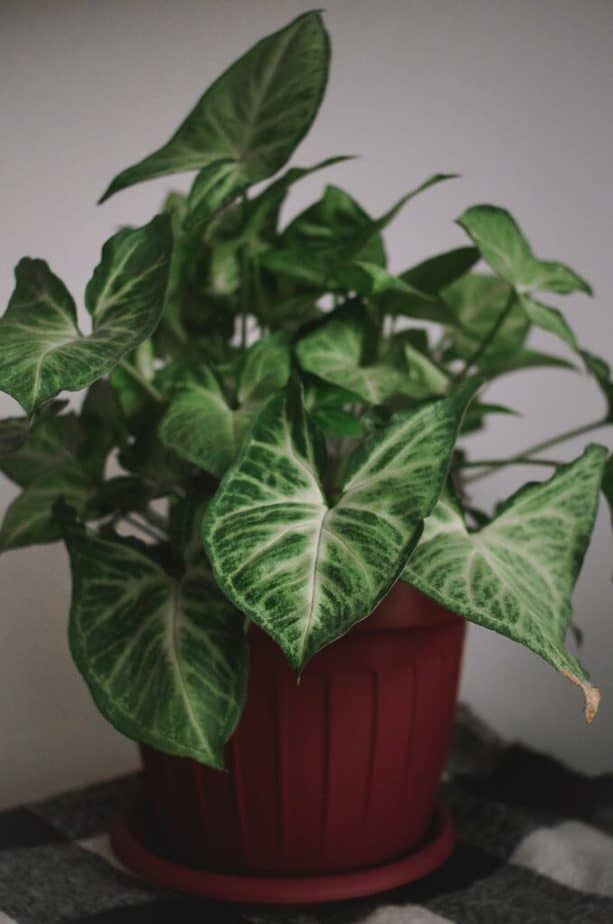
3. Arrowhead Plant
Botanically known as the Syngonium podophyllum, the Arrowhead Plant is a member of the Araceae family. It is native to the tropical rain forests in South and Central America. Because of the shape of its leaves, which are similar to a spade, it is commonly called the “arrowhead plant”.
An arrowhead plant offers lush green foliage in the right conditions. My own is near a window, so it gets good indirect light. As it is positioned in a group of plants placed together, it enjoys sufficient humidity.
The arrowhead does well in a moist soil potting mix. Water weekly and mist occasionally. It is a vine plant, so the stems can grow quite long, giving it a leggy look.
Pruning or a hanging basket can help give it a bushier appearance if you prefer that look.
Read more on caring for the arrowhead plant.

4. Areca Palm
Resembling bamboo, the Madagascar native Areca Palm is a clumping palm with long, narrow, flowing fronds on smooth trunks.
Botanically named the Dypsis lutescens or Chrysalidocarpus lutescens, it is a member of the Palmae family. The Areca is perfect for adding tropical elegance to your home or office décor.
When cultivated as a houseplant, this indoor palm requires a good amount of bright light. Indoor palms do well when placed near west-facing and south-facing windows.
The soil bed should be kept evenly moist, but not overwatered. Better you should forget occasionally. Humidity is appreciated, so occasional misting will be a treat.
Learn more about how to care for the areca palm.
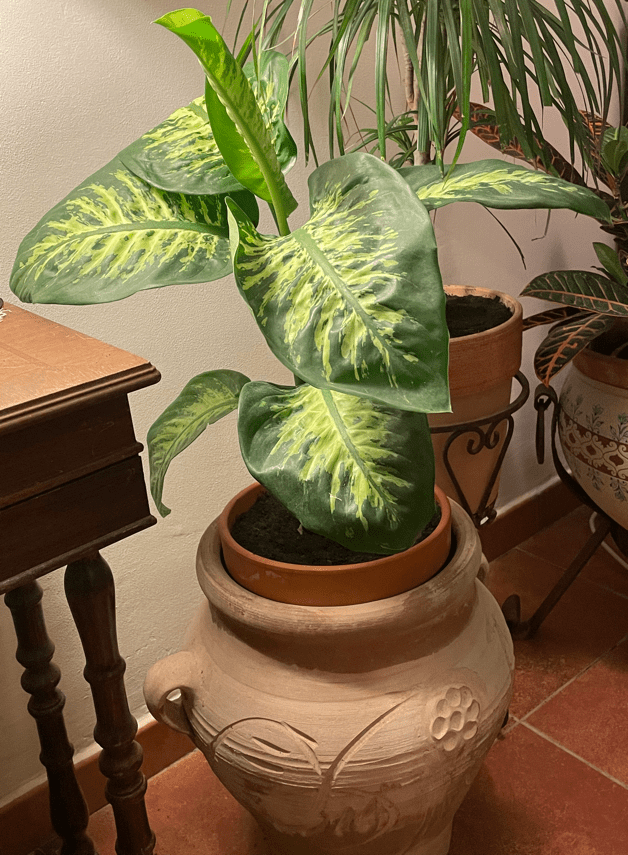
5. Dieffenbachia “Dumb Cane”
Commonly known as the “Dumb Cane,” this is one of the most popular houseplants due to its lavish, expansive foliage. Its popular name “dumb cane” originates because if you chew it, your tongue will begin to swell. With a swollen tongue, it’s quite difficult to speak!
The Dieffenbachia genus calls the Caribbean and South America home and is a member of the Araceae family. For a dieffenbachia to be happy and healthy, it will require bright indirect light, relatively high humidity, and most of all, correct watering.
Dieffenbachia is characterized by large oval-shaped leaves that are pointed and feature combinations of white, cream, and green.
It is a relatively easy plant to grow indoors, and it makes quite an impression when integrated into interior decorating.
Read all about growing dumb cane houseplant.
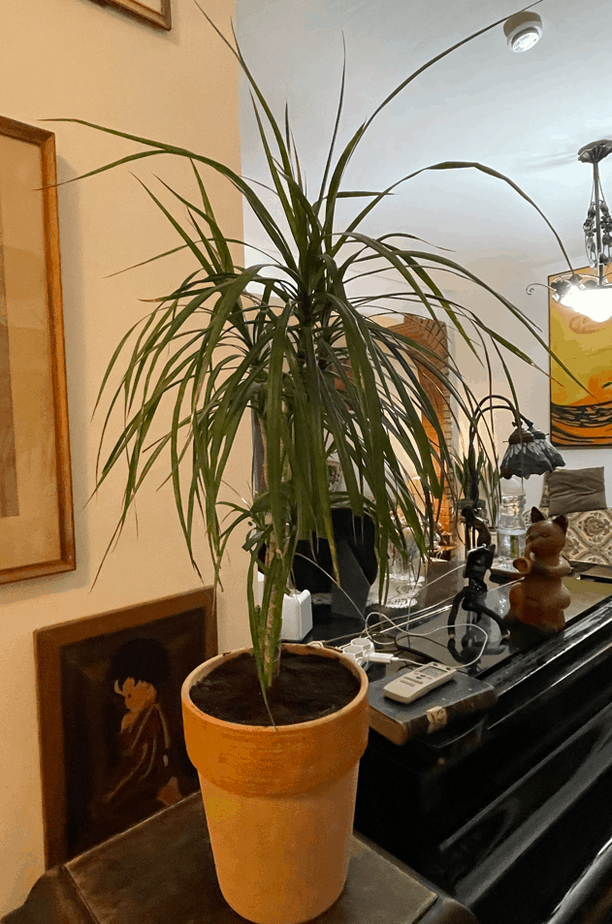
6. Dracaena Marginata “Dragon Tree”
Popularly called the Dragon Tree, it is a truly striking indoor plant. It looks to be a miniature palm tree and is one of the simplest houseplants to care for.
The Dracaena marginata is about as indestructible as houseplants come, so if you are a beginner with no green thumb, this is a great plant to start with. It calls Madagascar home, but thanks to its aesthetic appeal and low maintenance requirements, it can now be found globally.
Botanically identified as the Dracaena marginata, it features slim striped spiky leaves that resemble grass blades with red edges.
The dragon tree is drought-tolerant, meaning that problems may stem from overwatering it. Bright indirect light will allow this plant to thrive indoors, but it can adapt to low and medium light.
Learn how to care for the dragon tree.
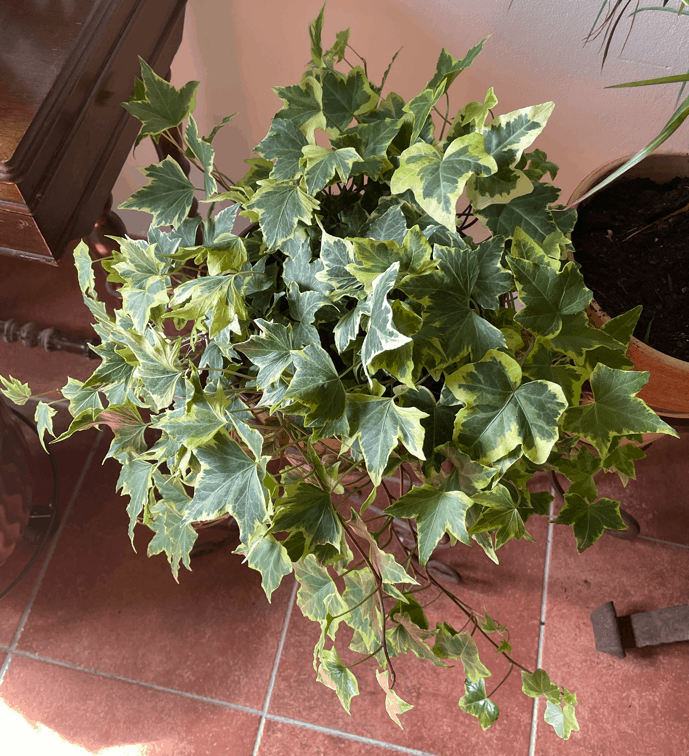
7. English Ivy Plant
Ivy plants brighten any room and is not difficult to grow if you know how to keep it happy. It will reward you with beautiful trailing vines that can grow to 50 feet or longer. The foliage features heart-shaped leaves in green or variegated patterns.
The Hedera Helix is a perennial evergreen and a member of the Araliaceae family. A climbing plant often seen on buildings or trees, the most commonly found species, “English Ivy” is native to Europe, Russia, and Scandinavia.
To cultivate ivy indoors, it prefers cooler temperatures and some humidity. Ivy will thrive in the shade, whether partial or full.
When locating the plant at home, get a trellis to latch onto for it to climb as it grows. You can also use hanging baskets to allow ivy to trail downwards.
The ivy plant is one of my favorite hanging plants with heart shaped leaves, as you can see in the photo below of my bathroom. It brings a touch of nature and greenery to the room, and also acts as a natural air purifier.
Read more on caring for English Ivy Plants.
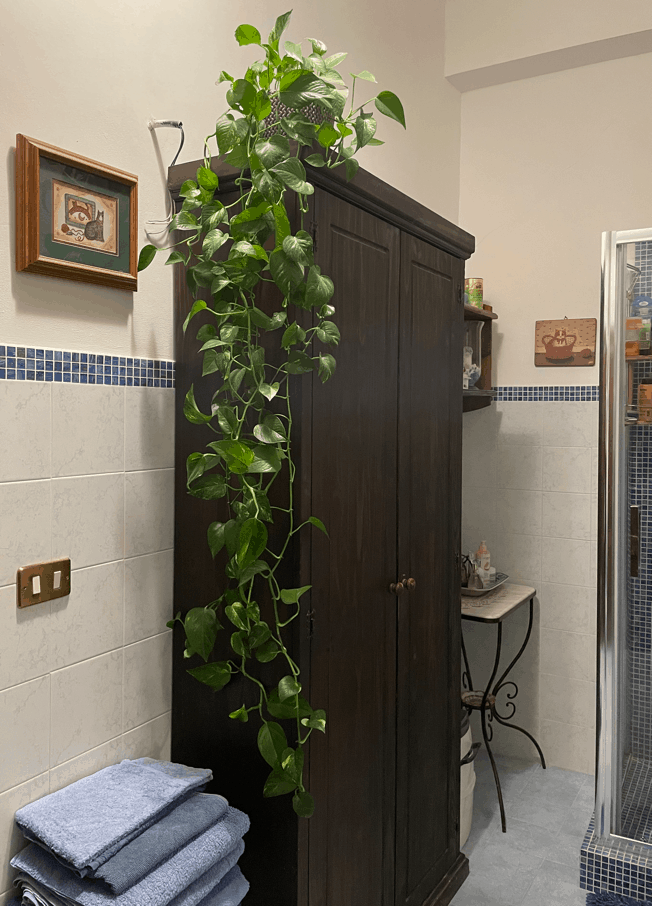
8. Golden Pothos Plant
The Pothos Plant, officially named epipremnum aureum, and sometimes referred to as “devil’s ivy” is one of the most commonly found, beginner-friendly houseplants to care for.
It is a native of the Caribbean, Mexican, and South American rainforests, but lives and flourishes happily inside homes and apartments worldwide. As an evergreen, it will flourish all year long with good care. This plant is also incredibly forgiving.
Jungle vines filled with vibrant green heart-shaped leaves characterize this plant. Most foliage will be variegated, although some plants may have solid green leaves.
Best of all, it thrives in low and moderate light environments. The real advantage to selecting a pothos plant is that it does not require much attention. The forgiving pothos flourishes even when neglected.
Learn about how to grow the pothos.
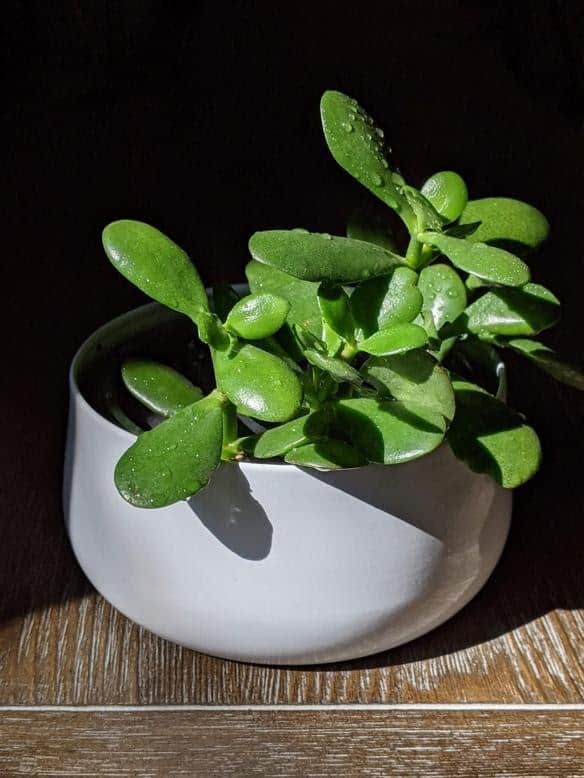
9. Jade Plant
Green leaves that are best described as “pillowy” are the attractive defining feature of the Jade Plant. Supposedly, this plant also brings good luck. The Crassula ovata, often called the Money Tree, is easy to care for indoors and outdoors.
A South African succulent, it is a member of the Crassula genus. This is another plant that does not ask for a great deal of attention.
Your main concern when cultivating one will be overwatering. This is a notoriously undemanding plant. Allow the soil bed to remain on the dryer side with infrequent watering.
Light is important for this succulent, so a bright sunny window is an ideal location.
Read more on how to care for the jade plant.
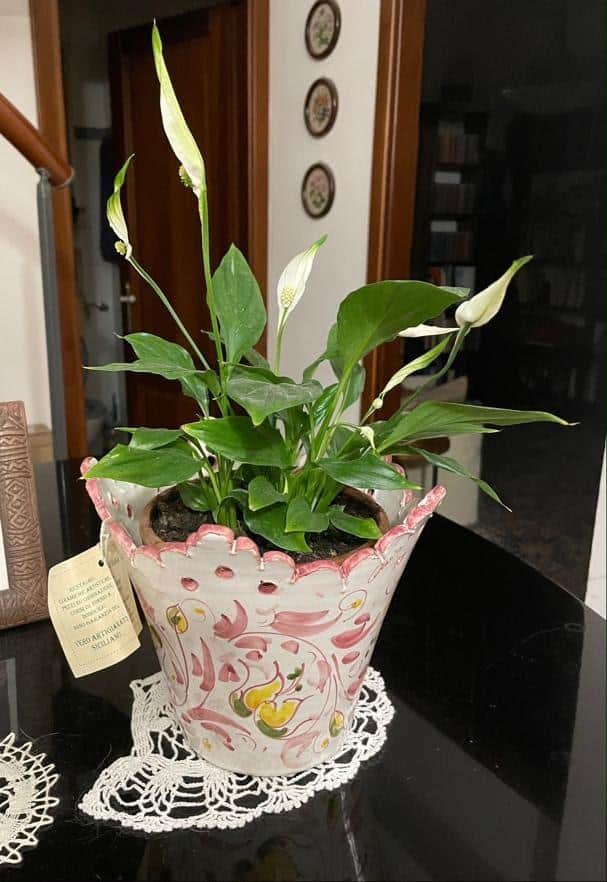
10. Peace Lily
The Peace Lily or spathiphyllum is a delightful houseplant that has very few needs. It boasts elegant, delicate white flowers and is a tropical hybrid species.
A member of the Araceae family, it is not a lily. It may look a bit like a lily thanks to its lovely hooded blooms, which might explain its popular name that resembles a calla lily featuring a white spathe.
This low-maintenance plant is related to other popular houseplants, such as the anthurium and the philodendron, but there is no connection to the lily family.
A perennial American rainforest plant, it will not require direct sunlight. They do exceptionally well in spaces with a limited amount of light, making them perfect for low-light offices, apartments, or locations without access to natural light.
Learn more about how to care for peace lily plant.
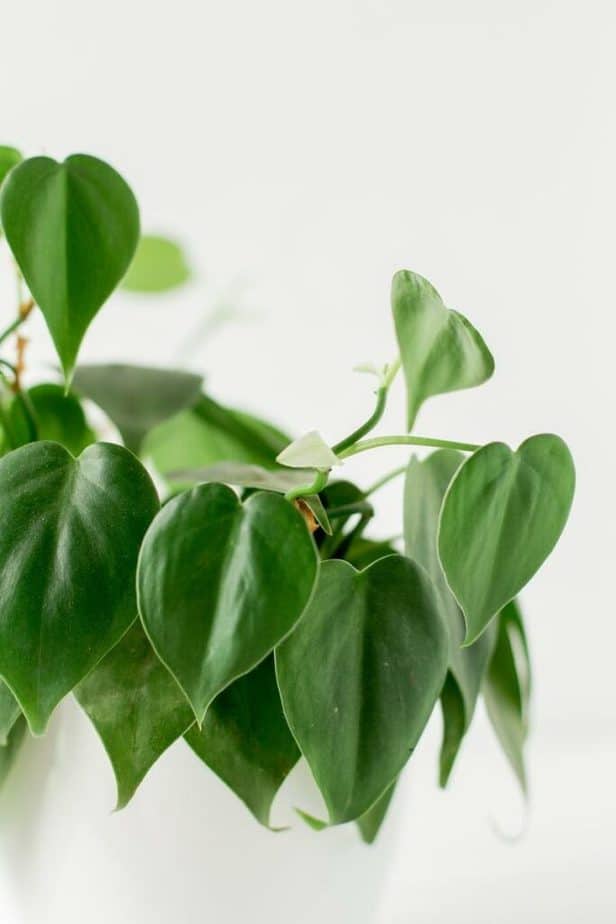
11. Philodendron
They stand, they trail, they hang, they climb. The Philodendron Plant can be positioned anywhere and still make a statement.
A member of the Araceae family, the Philodendron comes in two basic versions: vining plants that can climb or hang, and the non-climbing kind. Native to Central and South America, they are a part of a vast family of jungle plants. Leaves are generally large and a lovely shade of green.
This plant will thrive best in partial sunlight as opposed to direct sun exposure. In their natural habitat, they receive dappled sunlight under a canopy of tropical vegetation, which explains their preference for indirect natural light.
Read all about how to care for and grow philodendron plants.
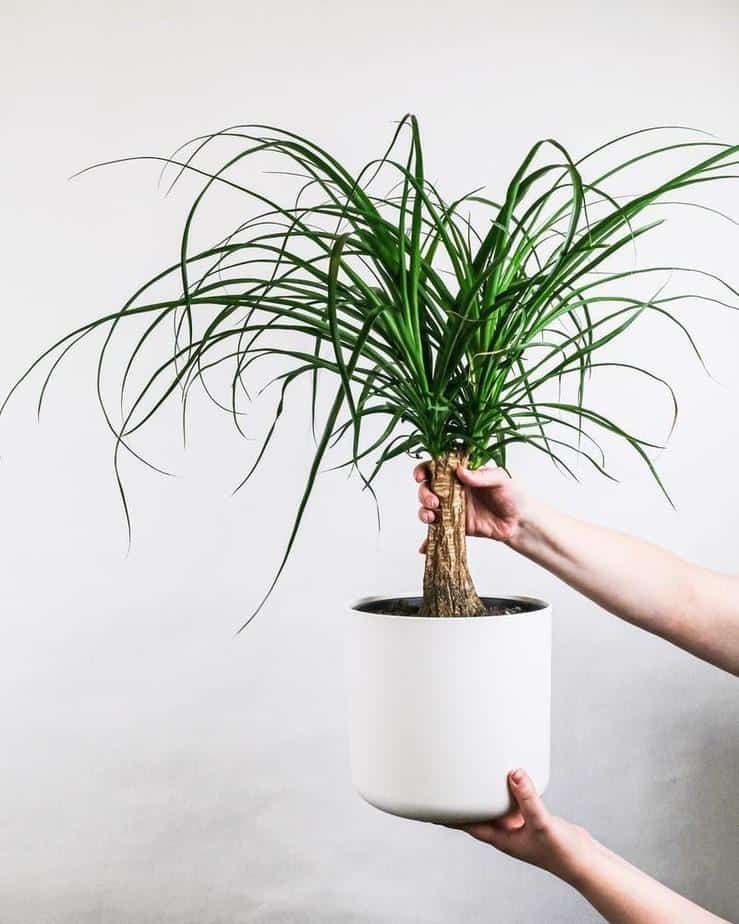
12. Ponytail Palm
A happy, funny plant, the Beaucarnea recurvata, commonly called the Ponytail Palm is a member of the Asparagaceae family and is not a palm at all. It is related to asparagus, to the Yucca, and to Agave plants.
Native to arid regions of Central America, it is a succulent, although it may not appear so. When grown indoors, it looks like a small tree characterized by its bulbous stem and disorderly, wild flowing, green, grass-shaped foliage.
The ponytail is a great plant for people who don’t have a great deal of time, but still want houseplants. It can be planted and basically forgotten.
It does love ample sunlight, but can nonetheless still prosper with indirect bright light. Want to wow your neighbors, dress up a windowsill with the ponytail.
During its growing season, water it weekly or bi-weekly. The bulbous trunk of this tree stores water for the plant’s survival, so not to worry if you forget the weekly watering.
Learn how to care for the ponytail palm.
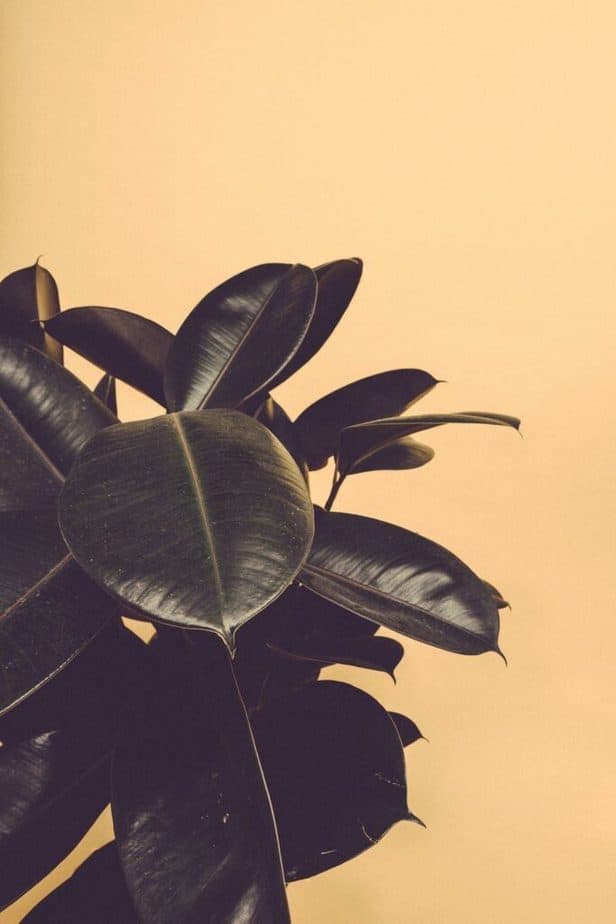
13. Ficus Plant “Rubber Tree”
The stunning Ficus elastica is ideal for homes and apartments alike with dark green oversized waxy leaves. This is a plant that has a larger-than-life presence and indoor versions can grow from six to ten feet tall.
It loves indirect bright light, so a window with a nice sheer curtain would be a good option for this impressive plant.
During its growing season, water it weekly to keep the soil moist. Excessive overwatering will cause leaves to drop. During winter dormancy watering can be reduced to once a month.
A southeast Asia native, its name originates in the use of its sap to make rubber. Height and lavish beautiful foliage make this plant a real show stealer.
Read more about growing ficus plants and trees.

14. Snake Plant
The Sansevieria trifasciata or Mother-in-law’s Tongue, is the absolute queen of easy to care for plants. You cannot find a more forgiving or tolerant houseplant.
It should be potted in sandy, well-draining soil. It can grow in different light level conditions that go from very low to full direct sunlight, making it ideal for any type of home. It can also grow under an office’s fluorescent light.
This plant is as low-maintenance as they come and asks little to nothing of its owner but will make you look like you have the greenest of thumbs.
An African native, they do thrive in hot, dry climates. However, take care because its leaves can suffer from sunburn with harsh direct sunlight exposure. A nice window sill spot in a west-facing window and watering when the soil bed dries out is all they ask for.
Learn more about how easy it is to care for the snake plant.
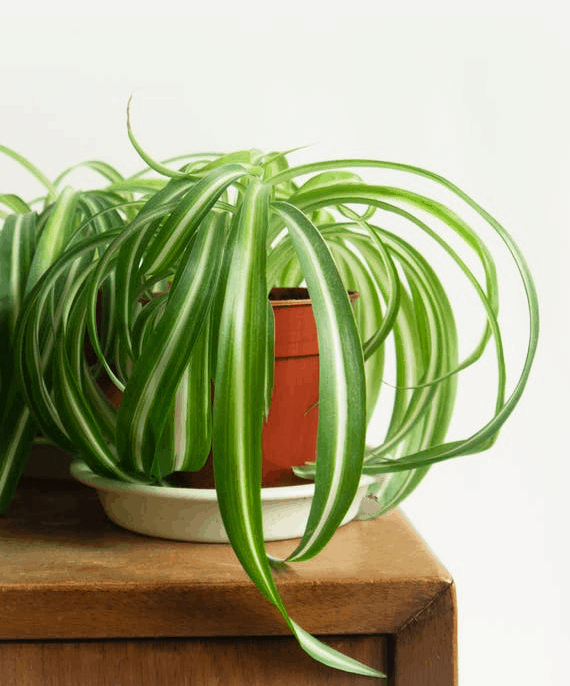
15. Spider Plant
The Spider Plant has nothing at all to do with spiders, but gets its name for its long, wiry foliage. An incredibly popular hardy houseplant, it will prosper in most conditions.
Placing them by a window that receives indirect sunlight and keeping the soil moist are all they require. These are great plants for apartment dwellers.
Originally from South Africa, and botanically known as Chlorophytum comosum, it is an herbaceous perennial and a member of the Asparagaceae family.
Longish stems feature graceful, arching slim foliage and petite flowers. When the flowers pass, little plantlets will develop, and they will grow their own roots.
Generally cultivated as hanging plants, they are a beautiful addition when cultivated in hanging baskets as leaves will cascade downward. Shelves, high furniture, or tall planters are ideal to give these plants the possibility to trail.
Read how to grow the spider plant.
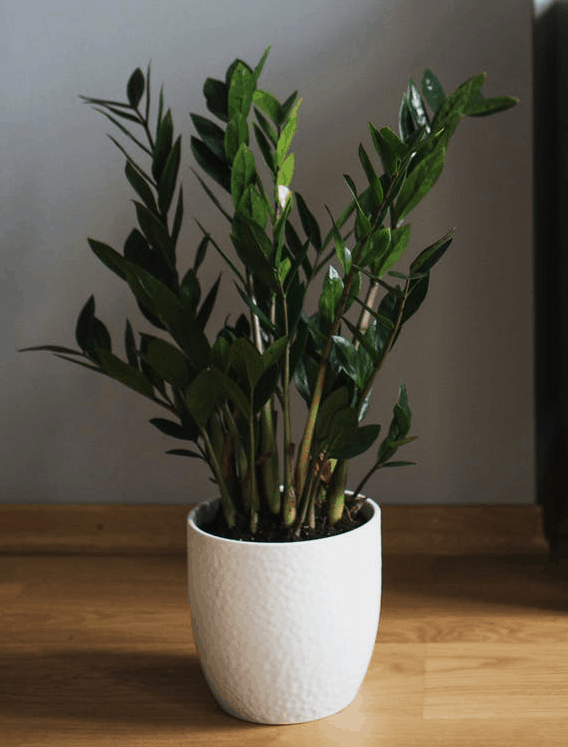
16. ZZ Plant
The Eastern African Zamioculcas zamiifolia is a drought-resistant plant, making it ideal for those who may forget to water the plant over time. Attractive deep green foliage can survive even with the most neglectful owner.
A member of the Aracae family, it will also thrive in low light conditions, making it perfect for any room in the house, even without large sunny windows or direct sunlight. Because ZZ Plant care is so simple, this tropical perennial is an ideal choice for beginners or those who travel regularly.
With minimal, adequate light, and a good soaking every few weeks, your ZZ will survive and thrive. No regular waterings are needed here.
They can benefit from occasional dusting, because its glossy deep green leaves can appear dull with dust piled up. Gently wipe a leaf with a damp soft cloth to return its natural shine. This will also help the plant with photosynthesis, allowing for correct plant nutrition.
Learn more about caring for the ZZ plant.
Best Indoor Plants Final Thoughts
There are many different types of indoor plants available today. Some are easier than others to maintain, while some may not tolerate certain environmental factors such as heat or humidity.
But regardless of what kind of plant you choose, remember to keep them healthy by providing proper lighting, feeding, and moisture.
Growing indoor plants will bring many health benefits as well, so there’s really no reason not to invite one into your home.
Other great lists to read to choose plants to start your garden:
Best Houseplants FAQs
What is the easiest houseplant to grow?
The easiest houseplants to grow are the Snake plant and the ZZ plant. Both of these plants require little watering and can adjust to low to bright light conditions.
What is the best houseplant to clean the air?
Snake plants are one of the best houseplants that clean the air. It’s also one of the easiest to grow, so there aren’t many reasons that you shouldn’t have a snake plant. Other great houseplants are the boston fern, spider plant, pothos, Chinese evergreen, and english ivy plants.
What are the best low-maintenance houseplants?
The best low-maintenance houseplants include the Snake plant, ZZ plant, Ponytail Palm, Chinese Evergreen, Jade plant, Philodendron, Pothos, Cacti and succulents.
Which plant is not good for the home?
The Amaranthus is a stunning plant, but it is a heavy-duty pollen producer. If you have allergies, this is a plant you do not want at home.
Where should I put my houseplants?
Deciding where to put your houseplants depends on the amount of light they need. For most indoor plants, put them in locations that will provide indirect light. In or near West, South and East-facing windows is always a good choice depending on the plant species.
Which indoor plant is good for the bedroom?
The Snake plant is a great indoor plant for the bedroom. It is one of the few indoor plants that will convert carbon dioxide into oxygen during the nighttime.
What is the easiest houseplant to keep alive?
Cacti and succulents are the easiest types of houseplants to keep alive. They require water sparingly, followed by the ZZ plant and the Snake plant for the same reason. They offer the most flexible options when it comes
What is the best plant for beginners?
The Golden Pothos plant offers the best combination of beauty and easy-care for beginners. A popular hanging plant, it will reward you with yards of vine filled with beautiful, variegated foliage with just a little tender loving care.

